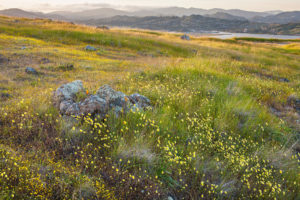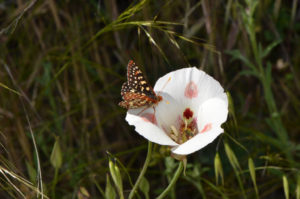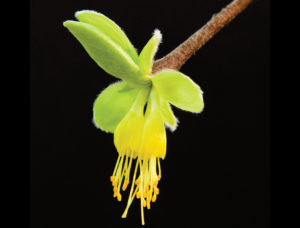Q: When I see bees and hummingbirds feasting on even tiny flowers, I wonder if each flower replenishes the nectar supply, or is it a one-time offering? [Dorothy Wonder, Berkeley]
A: Great question and you have a great name! Plants pollinated by wind (many grasses) or even water (duckweed or eelgrass) have no reason to produce nectar but do produce prodigious amounts of tiny pollen grains. Think hay fever. Flowers that rely on insects, birds, or bats for pollination produce nectar as well as pollen. The word nectar, derived from Latin, means “overcoming death” and was the favored drink of the gods. It apparently worked for them.
I like to imagine pollen as a hamburger (25 percent protein plus vitamins and minerals) and nectar as a candy bar (mostly carbohydrates in the form of sugars). Insects eat the pollen to provide energy for their own metabolic processes but also to provision their developing young. Nectar, on the other hand, provides immediate energy and ensures that the insect (or bird or bat) can fly to the next flower. In the case of honeybees, nectar is concentrated into honey and stored in the colony.
Nectar composition varies from species to species. Generally, nectar is composed mostly of sucrose but also fructose and glucose. It can contain all 20 amino acids, vitamins, alkaloids, and oils–perhaps a healthy candy bar after all. After the flower has been pollinated, the plant absorbs the unused nectar.
As with most careful research into biological phenomena, we soon discover there are no simple explanations. Plants have evolved a number of different strategies to attract and provide for pollinators. Gordon Frankie, a UC Berkeley bee expert, says some plants produce nectar differently throughout the day, effectively moving pollinators around by turning on and off their nectar source. Most plants produce one-day flowers and the nectar is produced just before the flower opens. So I would call it a one-time offering in general but there are exceptions, as Frankie notes.
Some plants have nectar sources that aren’t in flowers. These plants create a food resource for insects, especially ants that protect the plant from herbivores. A classic example is East Africa’s whistling thorn acacia. Golf-ball-size swellings with nectaries house tiny ant colonies. When a grasshopper or even a giraffe tries to eat the leaves, the ants attack the animal. While most common in the tropics, some plants in the temperate zone also have extra-floral nectaries. Sunflowers and elderberries both produce sugars at the base and stem of the leaves that provide parasitic wasps with a reliable food source. These wasps prey on leaf-eating caterpillars, which can harm the host plants.

.jpg)



